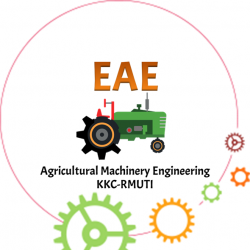Content

This allows you to work on projects when they’re convenient for you rather than having to schedule appointments with an accountant. It’s also sometimes called “desktop” or “desktop-based” because it doesn’t require an internet connection to function. It is installed on your desktop computer and stores data on local servers rather than in a central location. When spreadsheets were invented 40 years ago, the technology was a disruptor, replacing 10-key numeric keypads that had killed off the prior technology, a physical ledger and a sharp pencil with an eraser.
What are the types of traditional accounting?
Personal accounts, real accounts, nominal accounts, and valuation accounts are the four types of accounts described by the traditional approach.
Cloud software is available around the clock and can be accessed from anywhere with internet access—making it more reliable and better suited for accessing critical or sensitive information. It also means fewer errors—because there’s no need for someone to re-enter data or copy-paste spreadsheets from one spot to another, mistakes are reduced and accuracy is improved. This makes it ideal for businesses with many employees who need to share information with each other. This can be especially helpful if your business grows quickly and needs to get up and running without spending a large amount of money upfront. The data can only be accessed through the file system of that particular computer.
Run Accounting Just by Running the Business
Integrated accounting removes error opportunities by removing manual re-keying. Cloud-based software lets you streamline your processes and incorporate more functionalities into a single app. That saves time while optimizing the time you spend on accounting processes. This means it’s created with modern security threats in mind, so it can more adequately protect your data in today’s virtual environment. It’s pretty tricky to automate traditional accounting, so anyone still using older methods is effectively locked out of new tools.
However, most of the issues that labor faces in their daily work are hidden from management, but with three-day scheduling all these issues become visible. This program focuses on the impact of scheduling on job productivity, tracking forms, charting of data and the analysis and interpretation of these charts. When choosing the best accounting software, consider what factors are most important to you. For example, you might be able to integrate your accounts payable software with your billing system, but it would be tough to get it connected to your payment processing system.
The Advantages of Manual or Computerized Accounting
Because traditional accounting suggests that growth leads to success, many entrepreneurs interpret this principle to mean that they should constantly try to grow their business as much as possible, by any means necessary. This means reinvesting all the money they can—including their profits and personal funds—back into their expenses. They plan to cover their growth-driven increase in expenses with the increased income they predict that their larger, more expanded business will create. Accordingly, cloud accounting software represents the future of the practice of accounting.
What is an example of traditional cost accounting?
For example, a traditional costing calculation might find that factory overhead should be charged to products at the rate of $500 per direct labor hour, so if there is a slight change in the production process that increases direct labor by one hour, the cost of the product has just increased by $500 of overhead.
However, if you choose to digitalize, you get to make your data more accessible to everyone in the company. It’s easier to update, quicker to analyze, and usable by as many employees at a time as necessary—plus, you get to improve your customers’ quality of life. Traditional accounting often encourages (and motivates) large production batches, long lead times, high inventory (then shortages and expediting), and crisis management. It’s always a good idea to chat with an accountant to go through things in more detail. They can also help you set up bookkeeping systems, and train you (and any staff) in using them.
Products and services
Secondly, allowable expenses can reduce your Income Tax bill – but only if you can claim them. If you use cash accounting, you may not be able to claim some of your purchases until you’ve actually paid. Cash accounting only requires you to report money that’s changed hands, so it’s quite simple to pick up if you have no previous experience in finance or bookkeeping. In this post we’ll give you an overview of what traditional and cash basis accounting mean, along with some pointers to help you choose. If you’re interested in finding out more about the innovations in accounting, or you want to apply to become a member of INAA, and join our community of accountants, auditors, and consultants, visit our join us page today. The 21st century has changed industry forever with the utilisation of digital technologies.

Arguably, one of the most innovative developments in technology of the modern era is that of cloud computing. Book a call with our team to find out if Clarity is a good fit for your team, clients and accounting firm. Next, start looking into offering advisory services across your entire client-base. Traditionally it’s the top 10 or 20% of the lucky ones who get some business support service on top of their compliance work.
Cash accounting vs traditional accounting
Completing accounting tasks with a https://www.bookstime.com/articles/traditional-vs-virtual-bookkeeping system takes lots of time and is labor-intensive. An automated accounting system not only saves users time that could be spent on making the business more successful but also saves the company money. One major advantage of a traditional accounting information system is avoiding data system errors and file corruption. Most users don’t fully understand how computer systems store data which is why opening the wrong file or encountering errors can ruin current data accountant’s need to properly perform their job functions. With a traditional accounting system, a single file is used for each account eliminating any confusion users might have with a system that offers similar versions of the data.
But if you’re likely to change company structure or hit the £150,000 turnover threshold, you’ll have no choice but to switch over to accrual accounting. Before the advent of fast and cheap computers, accounting traditionally was processed manually with all transactions recorded in columnar papers and kept in voluminous binders. Once computers became popular and software affordable, accounting tasks moved into this medium, where concepts stayed the same but mechanics changed from papers to programs. Depending on the needs of your company and your available funds, a traditional accounting system may be exactly what you need to be successful. For many businesses, though, an automated accounting system that offers cloud storage is a better fit for the needs of their organization. Whatever your accounting needs may be, it’s important to conduct proper research before you decide to go with a traditional accounting information system or not.
It’s also worth noting that cloud computing is making its way into other industries too, with the need for flexible working opportunities on the rise across the board. Unlike traditional accounting softwares, or even the age-old paper route, cloud-based systems can often be accessed via any secure internet connection. Data security is not only an ethical requirement for accounting firms across the globe – it can be the difference between success and failure.
We’re on a mission to make running a successful small business accessible to as many people as possible. This is a problem for people who travel frequently or like to be able to check their finances from anywhere. If you ever need to go somewhere else, or if your computer shuts down or breaks, you won’t be able to access your account information.
Technical Support
Higher estimation and lower actual expense result in favorable variances or vice versa, while favorable variances are preferable. If you’re a small company that barely processes any transactions in a month, you may be able to rely on doing things the old-fashioned way. But, unfortunately, that can’t be said for fast-paced industries or https://www.bookstime.com/ large-scale companies. That includes the famously time-consuming and error-prone pen-and-paper method, which also comes with the added disadvantage of being accessible from one place at a time by only one person at once. The VAT Cash Accounting Scheme is a way of reporting and paying VAT that follows the principles of cash accounting.
Each disruption resulted in process enhancements that generated greater efficiencies, decreased risks of error, and more humane and productive ways of working. It wasn’t that long ago that people drove their cars holding a large unfolded map in one hand, glancing at it now and then to determine when to make the next turn. Today, we look back and marvel at how antiquated this everyday practice has become.
Many different words are used in textbooks, articles and statements to describe these ideas — concepts, conventions, assumptions, postulates for example. Later in Part Three (Chapter 17) we shall look at how the accounting bodies define and divide them, but here we concentrate on the ideas themselves. CoraCloud by CoralTree, Inc. offers an all-in-one solution that meets these criteria, making it a popular choice for businesses seeking to modernize their accounting practices. For years, MCA has been teaching and helping companies start Externalizing Work® as part of becoming an agile contractor.
Businesses using the scheme pay VAT on sales when they’re paid by their customers and reclaim VAT on their purchases when they pay their suppliers. It is also true to say that there tends to be a gap between how the P&L looks and what is in the bank account. That means that you may need to produce a separate cash flow forecast, and you may want a reconciliation between the profit you have made and the money that has actually hit the account.
